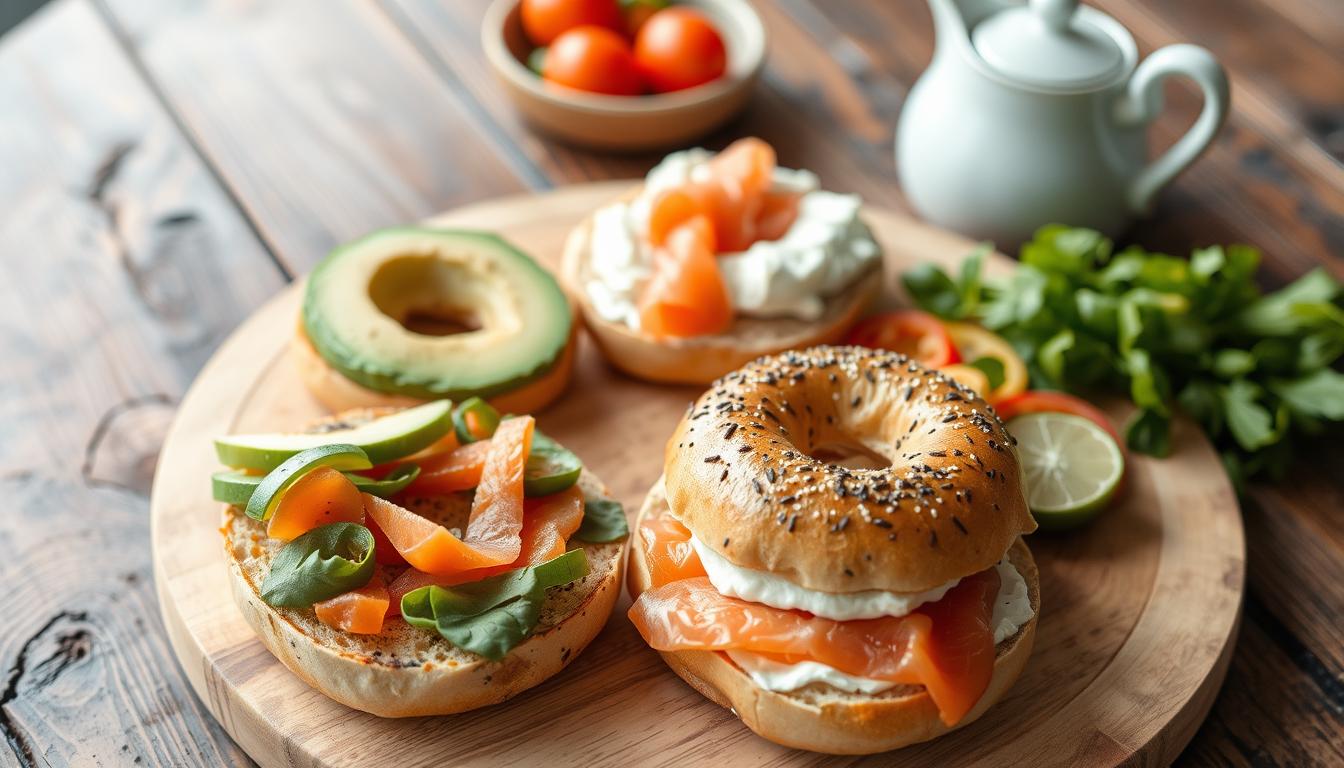Starting your day with a tasty breakfast is key. Gluten-free bagels are a great choice. They taste and feel like regular bagels but without gluten. Enjoy them with your favorite spreads or as a base for breakfast sandwiches.
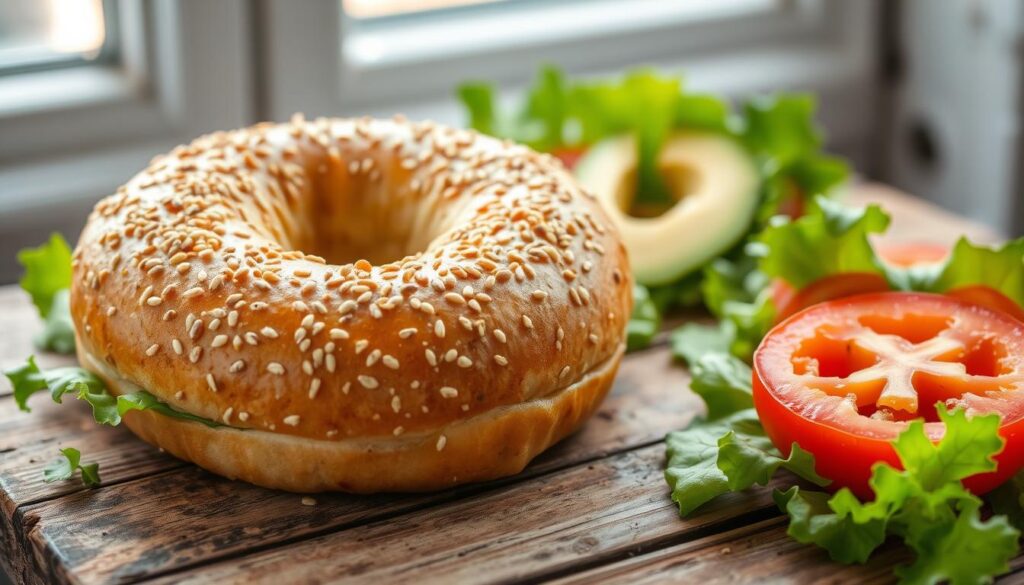
Gluten-free bagels are ideal for those who can’t eat gluten or want a healthier start. They have a rich flavor and a chewy texture. You can pick from many gluten-free bagel options to match your taste.
Key Takeaways
- You can enjoy gluten free bagels A Flavorful Alternative for Your Morning as a delicious and satisfying breakfast option.
- Gluten free bagels offer a similar taste and texture to traditional bagels without the gluten.
- Gluten free bagels are perfect for those who are gluten-intolerant or looking for a healthier option.
- You can use gluten free bagels as a base for breakfast sandwiches.
- Gluten free bagels come in a variety of flavors and textures to suit your taste.
Understanding Gluten-Free Bagels and Their Benefits
Gluten-free bagels A Flavorful Alternative for Your Morning start with the right ingredients. Traditional bagels use wheat flour, which has gluten. To make gluten-free ones, use flours like almond, coconut, or rice. These flours mimic wheat’s texture but are gluten-free.
Choosing gluten-free bagels has many health perks. They can help reduce inflammation and improve digestion. Plus, they often have fewer calories and more fiber than regular bagels. For a tasty, healthy option, try a mix of almond and coconut flour.
What Makes a Bagel Gluten-Free
A gluten-free bagel uses ingredients without gluten. This includes flours like rice or almond, eggs, and yeast. When making gluten-free bagels, pick ingredients that are gluten-free to ensure they’re safe for those with gluten issues.
Health Benefits of Choosing Gluten-Free Options
Gluten-free choices offer many health benefits. Some of these include:
- Reduced inflammation
- Improved digestion
- Lower calorie count
- Higher fiber content
Nutritional Profile of Gluten-Free Bagels
Gluten-free bagels can be a nutritious part of your diet. They can be rich in protein, fiber, and healthy fats. By using a simple recipe and alternative flours, you can make a tasty, healthy snack or breakfast.
Essential Ingredients for Perfect Gluten-Free Bagels A Flavorful Alternative for Your Morning
To make delicious gluten-free bagels, you need the right ingredients. You’ll need gluten-free flours like almond flour, coconut flour, or rice flour. Also, yeast, salt, and sugar are must-haves. Sometimes, xanthan gum or guar gum is added for texture.
If you want gluten-free dairy-free bagels, use non-dairy milk instead of regular milk. Here are the key ingredients:
- Gluten-free flours (almond flour, coconut flour, rice flour)
- Yeast
- Salt
- Sugar
- Xanthan gum or guar gum (optional)
- Non-dairy milk alternatives (almond milk, soy milk)
With these ingredients, you can make tasty gluten-free bagels. They’re great for snacking or as a base for breakfast sandwiches.
Mastering Your Gluten-Free Bagel Recipe
To make a delicious gluten-free bagel, you need to understand the process of creating the perfect dough. This involves mixing and kneading the ingredients until they form a smooth and elastic texture. When learning how to make gluten free bagels, it’s essential to note that the type of flour used can greatly affect the final product. A gluten-free bagel made with the right ingredients can be just as tasty as a traditional one.
Here are some key steps to follow:
- Mixing: Combine the ingredients in a specific order to create a uniform dough.
- Kneading: Work the dough until it becomes smooth and elastic, which can take around 10 minutes.
- Shaping: Use your hands or a bagel mold to shape the dough into the desired form.
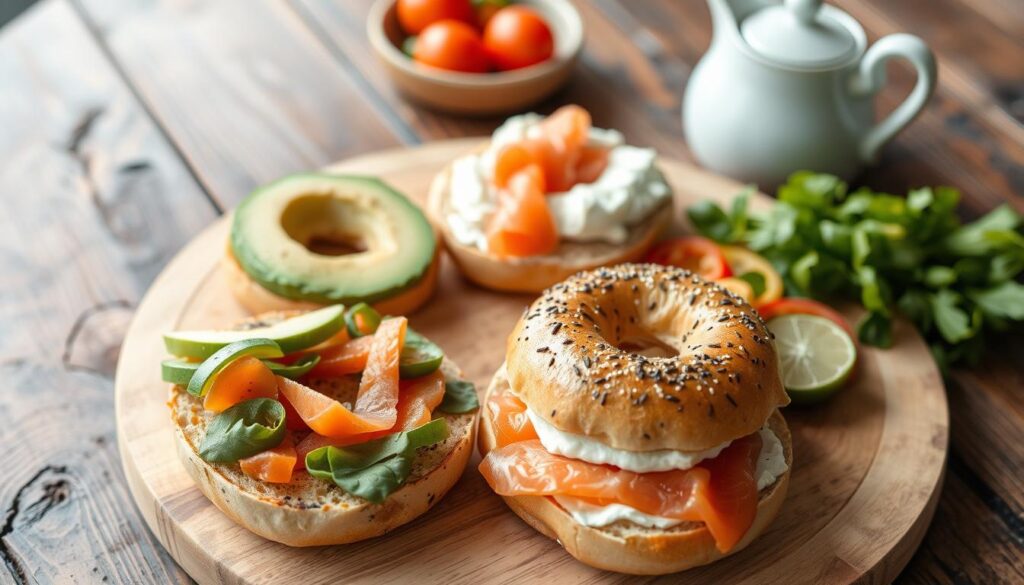
Boiling and baking are also key steps in making a gluten-free bagel. By following these steps and using the right ingredients, you can create a delicious and authentic-tasting gluten-free bagel. Remember, practice makes perfect, so don’t be discouraged if your first attempts don’t turn out as expected. With time and patience, you’ll master the art of making gluten-free bagels.
Top Tips for Texture and Taste
To get the perfect texture in your gluten free bagels, focus on the flour ratio and liquid amount. Make sure the dough is kneaded and shaped right. Try adding sesame seeds, poppy seeds, or dried fruit for extra flavor.
Here are some important tips for gluten free bagels: A Flavorful Alternative for Your Morning
- Use a mix of gluten-free flours for the right texture.
- Avoid overmixing to prevent a dense bagel.
- Let the dough rise for the right time for the best texture.
By following these tips and honing your baking skills, you can make gluten free bagels that taste great and look good. Whether you’re experienced or new to baking, with patience and the right techniques, you can impress everyone with your gf bagels.
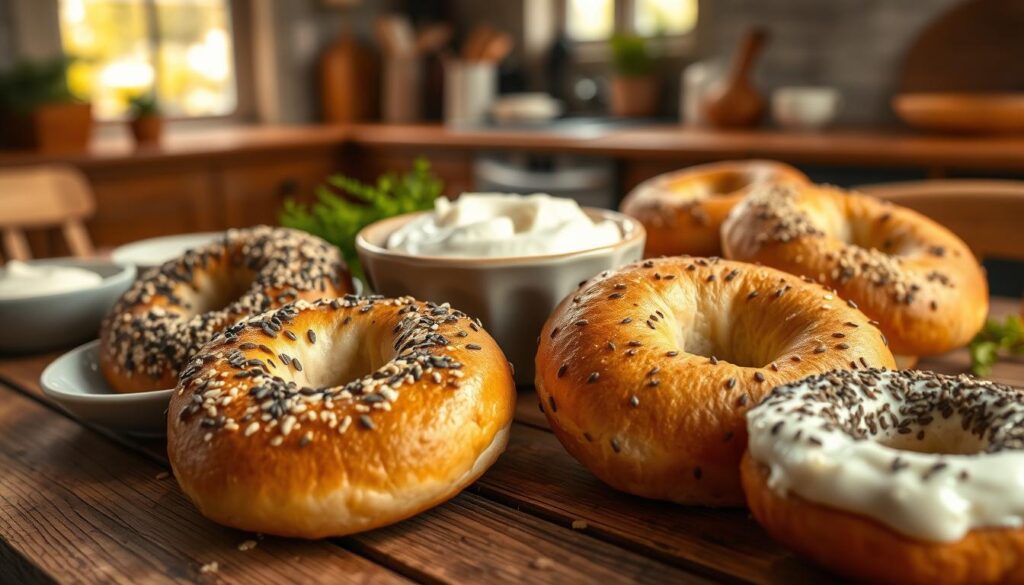
As you keep trying new recipes and techniques, making gluten free bagels becomes more fun and rewarding. With the right ingredients and a bit of practice, you can make delicious gluten free bagels that everyone will love.
Creative Toppings and Serving Suggestions
Now that you’ve got your gluten free bagel recipe down, it’s time to get creative. You can use your gluten free dairy free bagels in many delicious ways. They’re perfect for a variety of meals and snacks.
Classic bagel toppings include cream cheese, lox, and capers. But you can also try new flavors like avocado, bacon, and eggs. Use your bagels for breakfast sandwiches or as a side with scrambled eggs and sausage.
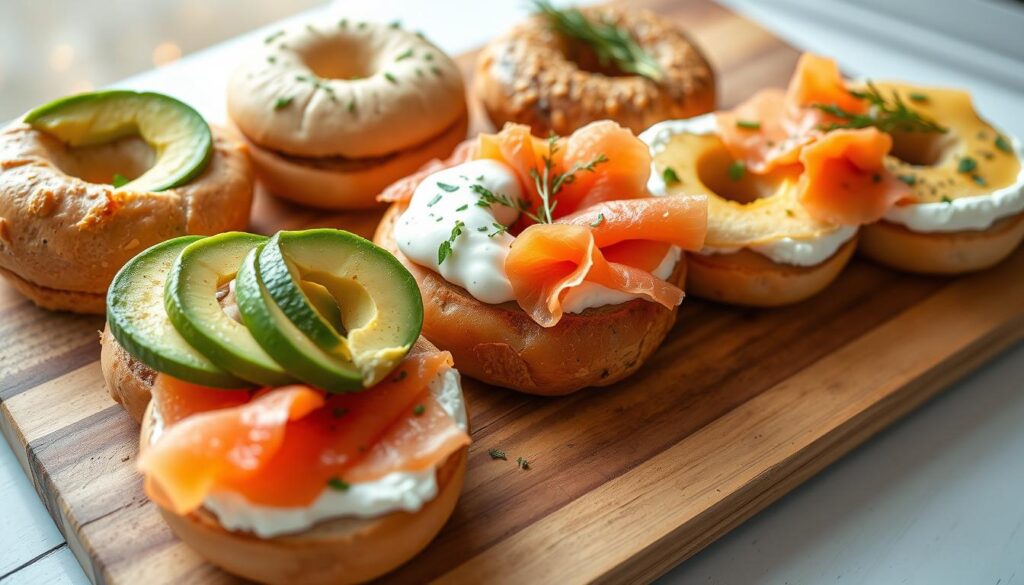
For lunch, top your bagels with turkey, cheese, and veggies for a healthy meal. The options are endless. With a bit of creativity, you can make your gluten free bagels A Flavorful Alternative for Your Morning into a masterpiece. Here are some ideas:
- Grilled chicken and hummus
- Smoked salmon and cream cheese
- Veggie delight with avocado and sprouts
Remember, the secret to great gluten free bagels is using top-notch ingredients. Don’t be afraid to try new toppings and serving ideas. With practice and patience, you’ll make delicious gluten free bagels for any time of day.
Storing and Freezing Your Homemade Gluten-Free Bagels A Flavorful Alternative for Your Morning
Now that you’ve learned to make gluten-free bagels, it’s key to store them right. This keeps them fresh and tasty. You can store them at room temperature for up to 3 days. For longer freshness, freeze them for up to 2 months. This is great if you make a big batch.
To freeze your gluten-free bagels, lay them out on a baking sheet. Then, put them in a freezer-safe bag or container. When you want to eat them, thaw at room temperature or reheat in the oven or toaster. This way, you can enjoy them for weeks.
Here are some tips for storing and freezing your gluten-free bagels A Flavorful Alternative for Your Morning:
- Store them in an airtight container to maintain freshness
- Freeze them as soon as possible to preserve texture and flavor
- Label the container or bag with the date and contents
By following these simple tips, you can keep your gluten-free bagels fresh and delicious longer. Whether you’re new or experienced, knowing how to store them is key to enjoying these tasty treats.
Conclusion: Enjoying Your Gluten-Free Bagel Journey
Starting your gluten-free bagel journey is exciting. Remember, it takes practice to get it right. Don’t worry if your first batch doesn’t meet your expectations. With time and patience, you’ll master the art of making gluten-free bagels.
Gluten-free bagels are great for anyone, whether you need to avoid gluten or just want a healthier snack. They have a rich flavor and a chewy texture. They’re perfect for any time of day or as a base for sandwiches.
So, get creative and enjoy the world of gluten-free bagels! Try different toppings and flavors to find what you like best. The most important thing is to have fun and enjoy every bite. Celebrate your progress as you become a skilled home baker.
FAQ
What makes a bagel gluten-free?
Traditional bagels use wheat flour, which has gluten. Gluten-free bagels use flours like almond, coconut, or rice. These flours give a similar texture without gluten.
What are the health benefits of choosing gluten-free bagels?
Gluten-free options can reduce inflammation and improve digestion. They often have fewer calories and more fiber than regular bagels.
What are the essential ingredients for making gluten-free bagels?
You need gluten-free flours, yeast, salt, and sugar for gluten-free bagels. You might also add xanthan or guar gum for texture. Use non-dairy milk for dairy-free options.
What are the key techniques for mastering a gluten-free bagel recipe?
Mastering gluten-free bagels requires good mixing, kneading, and shaping. Use the right boiling and baking methods for the best results.
How can I achieve the perfect texture and taste for my gluten-free bagels?
Focus on the flour ratio and liquid amount in your recipe. Proper kneading and shaping are key. Try different toppings like sesame seeds or dried fruit for unique flavors.
What are some creative toppings and serving suggestions for gluten-free bagels?
Try classic toppings like cream cheese and lox, or modern ones like avocado and bacon. Use gluten-free bagels for breakfast sandwiches or as a side with eggs and sausage. For lunch, top them with turkey, cheese, and veggies for a healthy meal.
How can I properly store and freeze my homemade gluten-free bagels?
Store gluten-free bagels at room temperature for 3 days or freeze for 2 months. Freeze them in a single layer on a baking sheet, then in a freezer-safe bag. Thaw at room temperature or reheat in the oven or toaster.

